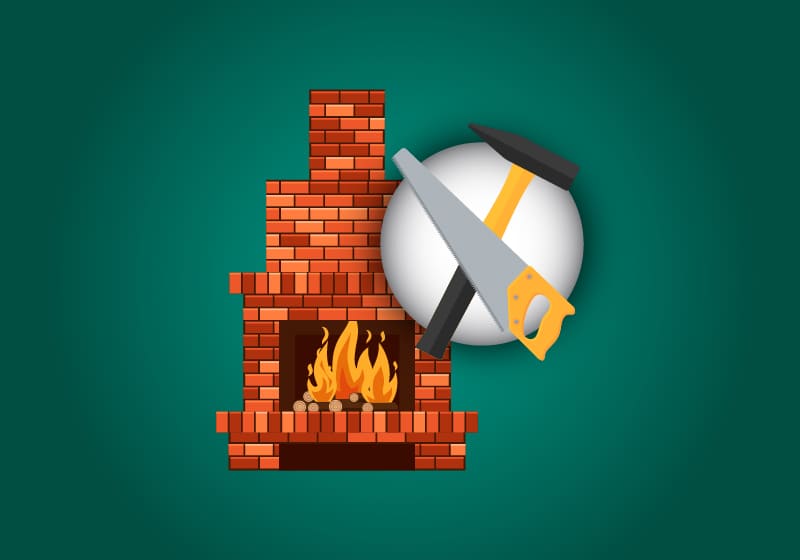A fireplace in your home can be a nice decorative item to have, and they can be a high selling point in certain locations. But if a fireplace sits unused for a prolonged period of time, they can become a safety issue. Potential buyers can see them as more of a hassle to maintain, and a bulky fireplace can disrupt the look of a room. So if you’re a homeowner or renovator, how can you cut out that old smokestack to update your property?
Have a Professional Look at It
Chances are that if you don’t use your fireplace very often, you may not know the condition it’s in. If that’s the case, don’t immediately turn on your fireplace to see if it works. Dirt and other debris can build up over years of inactivity, and suddenly lighting a flame can start a dangerous fire. Call in a professional to examine your chimney both inside and outside. They can give you the necessary information on the condition of your fireplace and accompanying components, as well as advise the best course of action to have it removed. These inspectors may also be licensed to get everything shut off and closed to help the removal process.
Protect the Room and Yourself
Once you know what you are working with, it’s time to get set up for the renovation. Lay plywood on the floor and place a tarp on it to protect from large chunks of stone, and tape up plastic sheeting on the walls. You will also need tools such as:
– A tape measure
– A circular saw
– A sledgehammer
– Protective equipment such as gloves, goggles and a mask.
Clean Out the Chimney
An unused fireplace can have a variety of junk inside of it. Clean out any ash, soot, leaves, dirt or even critters from the chimney and fireplace. It’s best to get this taken care of, even if no one will be seeing the inside. Having lots of dirt in your walls or an animal infestation can create problems down the road for you. Look at hiring a professional chimney sweep to help with the cleaning process, and to help remove the chimney’s ductwork inside.
Chip Away the Bricks
Start the removal process by chipping away at the mortar encasing the bricks on the chimney and fireplace. Go slowly and only remove one brick at a time from the top to prevent them all falling off and injuring you or damaging your home. Be especially cautious when removing the chimney on your roof, and avoid using power tools as you could lose your footing. To dispose of the old bricks, you can rent a dumpster to throw them away, or save them for future projects.
Closing Things Off
After you’ve removed the bricks, check that the remaining openings are flush with your roof and wall. On your roof, nail down plywood and shingles to cover up the old chimney hole and prevent any water from seeping inside. To make sure that the opening from the mantle is taken care of, construct a wooden support frame to keep the remaining bricks inside the walls from collapsing. Then you can place drywall over the opening and paint it to match the rest of the room.
Clean Up
When you’re all done, carefully roll up the tarp with the leftover mortar and brick pieces. Vacuum up any dirt to keep from inhaling it and getting sick. Removing an old chimney will take some work, but it’s a project that you can accomplish by yourself with some minor help. You can make your home more maintenance-free and attract a broader range of buyers.
Have Your Old Fireplace Inspected by NPI
If you are unsure about that old fireplace in your home, an NPI professional can easily examine it for you. Contact your local inspector to schedule an inspection today!



